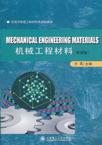机械工程材料
出版时间:2011-8 出版社:大连理工大学出版社 作者:齐民 编 页数:275
内容概要
《机械工程材料(双语版)》主要包括两部分:第一部分是基础部分,包括材料的性能、结构与组织,相图与相变,使学生一般性地建立材料的成分、组织、性能及工艺间的联系;第二部分是应用部分,介绍常用材料的成分、组织、性能及工艺间联系,也是对第一部分知识的巩固。每一章节前面以通俗的例子开始,逐渐引人专业概念,每章最后有供学生讨论的问题,以使学生迅速建立材料的科学基础,同时将所学知识尽可能与实际和应用相结合,提高分析问题和解决问题的能力。全书由齐民统稿并最后定稿。
书籍目录
Chapter 0 Introduction 绪论
0.1 Materials Science and Engineering 材料科学与工程
0.2 Major Classes of Materials 材料的分类
0.3 Materials in Engineering 工程中的材料
Questions and discussions
重点内容概述
Chapter 1 Properties of Materials 材料的性能
1.1 Mechanical Properties of Materials 材料的力学性能
1.1.1 Strength and Plasticity of Materials 材料的强度与塑性
1.1.2 Hardness 硬度
1.1.3 Impact Toughness 冲击韧性
1.1.4 Fatigue 疲劳
1.1.5 Fracture Toughness 断裂韧性
1.1.6 Viscoelasticity 滞弹性
1.2 Physical Properties of Materials 材料的物理性能
1.2.1 Density 密度
1.2.2 Thermal Properties 热性能
1.3 Chemical Properties of Materials 材料的化学性能
1.3.1 Corrosion 腐 蚀
1.3.2 Oxidation 氧化
1.4 Process Properties of Materials 材料的工艺性能
1.4.1 Casting 铸造性
1.4.2 Forming 锻造性
1.4.3 Joining Process 连接工艺
1.4.4 Machining 机加工性
Questions and discussions
重点内容概述
Chapter 2 Structures of Materials 材料的结构
2.1 Atomic Scale Structure in Materials 材料的原子结构
2.1.1 Ionic Bonding 离子键
2.1.2 Covalent Bonding 共价键
2.1.3 Metallic Bonding 金属键
2.1.4 Van der Waals Bonding 范德瓦尔斯键
2.2 Crystal Structure in Materials 材料的晶体结构
2.2.1 Lattices and Unit Cells 晶格和晶胞
2.2.2 Typical Metallic Crystal Structures 典型的金属晶体结构
2.3 Crystal Defects 晶体缺陷
2.3.1 Point Defects 点缺陷
2.3.2 Linear Defects 线缺陷
2.3.3 Planar and Volume Defects 面缺陷和体缺陷
2.4 Diffusion 扩散
2.4.1 Diffusion Mechanisms 扩散机制
2.4.2 Rate of Diffusion 扩散速率
2.4.3 Factors Affecting Diffusion 影响扩散的因素
Questions and discussions
重点内容概述
Chapter 3 Phase Equilibrium and Phase Diagrams 相平衡和相图
3.1 Crystallization Process of Pure Metals 纯金属的结晶过程
3.1.1 Cooling Curve of Pure Metals 纯金属的冷却曲线
3.1.2 Nucleation and Growth of Crystal in Liquid
Metal液体金属中晶体的形核与生长
3.1.3 Allotropy Transformations 同素异构转变
3.2 Phase Diagram of Two Component System 二元系相图
3.2.1 The Binary Isomorphous Diagram 二元匀晶相图
3.2.2 The Binary Eutectic Phase Diagram 二元共晶相图
3.2.3 The Binary Peritectic Phase Diagram 二元包晶相图
3.2.4 Binary Phase Diagram with Intermetalljc Compound
具有金属间化合物的二元相图
3.2.5 The Binary Eutectoid Phase Diagram 二元共析相图
3.2.6 General Rules for Analyzing Phase Diagram 分析相图的一般原则
3.3 Fe-C Phase Diagram 铁-碳相图
3.3.1 Analysis of Fe-C Phase Diagram 铁-碳相图分析
3.3.2 Equilibrium Crystallization Process of Typical Fe-C
Alloys 典型铁-碳合金的平衡结晶过程
3.3.3 Influence of C Contents on Microstructure and Properties
of Fe-C Alloys 碳含量对铁-碳合金微观组织与性能的影响
3.4 Solidification Under Practical Condition实际条件下的凝固
3.4.1 Grain Size After Practical Solidification 实际凝固后的晶粒尺寸
3.4.2 Dendritic Segregation During Isomorphous Transformation
匀晶转变过程中的枝晶偏析
……
Chapter 4 Plastic Deformation and Strengthening 塑性变形与强化
Chapter 5 Siructure and Microstructure Transformation During
Thermai Process 热过程的结构与微观组织转变
Chapter 6 Steels for Engineering工程用钢
Chapter 7 Cast Irons 铸铁
Chapter 8 Nonferrous Metals and Alloys 有色金属及合金
Chapter 9 Ceramics for Engineering 工程陶瓷
Chapter 10 Polymers for Engineering 工程高分子
Chapter 11 Composite Materials for Engineering 工程复合材料
Appendix 附录
Key Terms 关键术语中文解释
References 参考文献
章节摘录
Forming operations are those that the shape of a metal piece is changed by plasticdeformation; for example,forging,rolling,extrusion,and drawing are common formingtechniques. Of course,the deformation must be induced by an external force or stress,the magnitude of which must exceed the yield strength of the material. Most metallicmaterials are especially amenable to these procedures,being at least moderately ductileand capable of some permanent deformation without cracking or fracturing. When deformation is achieved at a temperature above which recrystallization oc-curs,the process is termed hot working(Section 7. 12), otherwise,it is cold working.With most of the forming techniques,both hot-and cold-working procedures are possi-ble. For hot-working operations,large deformations are possible,which may be succes-sively repeated,because the metal remains soft and ductile. Also,deformation energy re-quirements are less than that for cold working, However,most metals experience somesurface oxidation, which results in material loss and a poor final surface finish. Cold working produces an increase m strength with the attendant decrease in ductility,sincethe metal strain hardens; advantages over hot working include a higher quality surfacefinish,better mechanical properties,and closer dimensional control of the finished piece.On occasion,the total deformation is accomplished in a series of steps in which the pieceis successively cold worked a small amount and then process annealed However,this isan expensive and inconvenient procedure. ……
图书封面
评论、评分、阅读与下载
